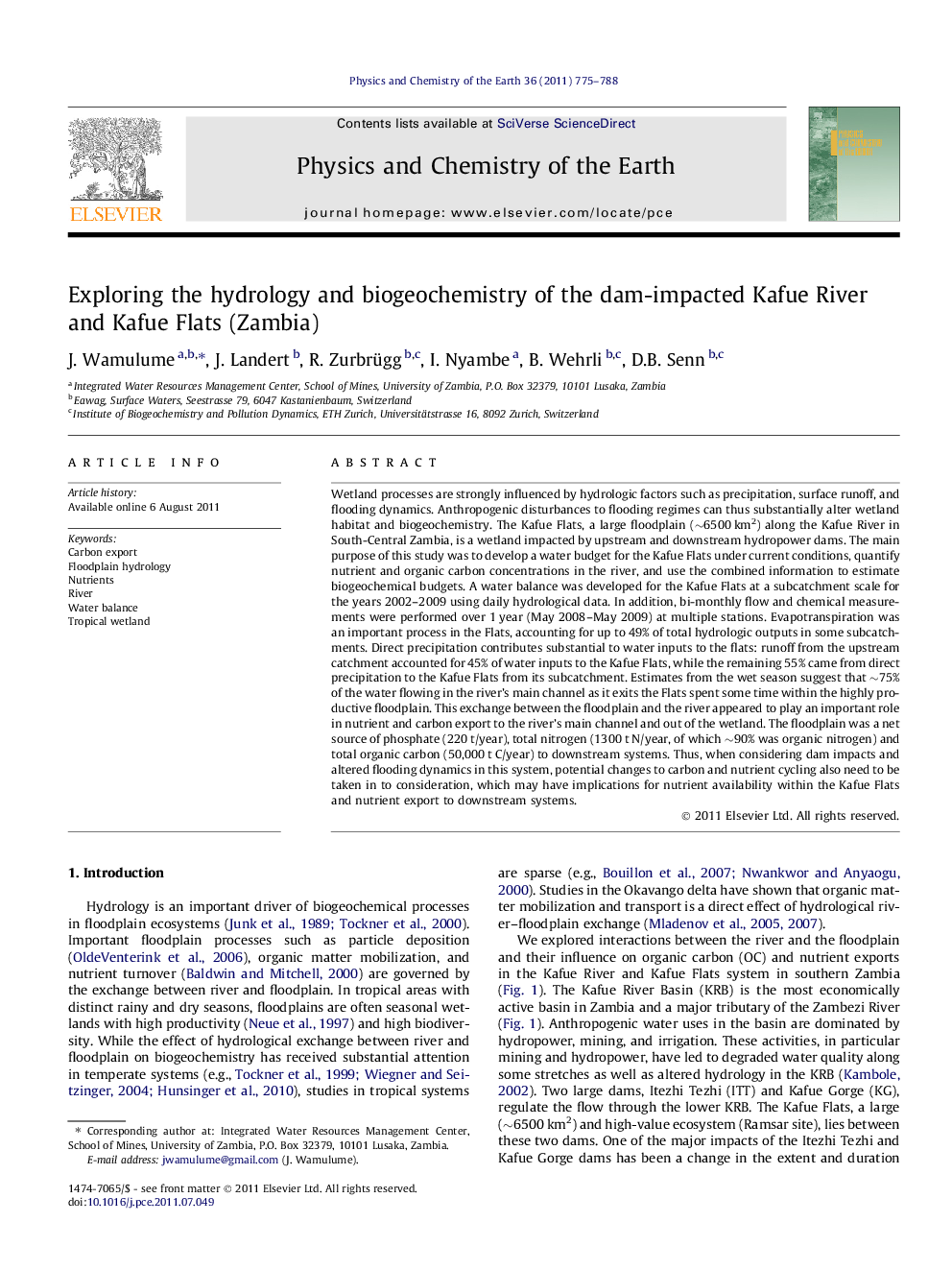| کد مقاله | کد نشریه | سال انتشار | مقاله انگلیسی | نسخه تمام متن |
|---|---|---|---|---|
| 4721291 | 1639374 | 2011 | 14 صفحه PDF | دانلود رایگان |

Wetland processes are strongly influenced by hydrologic factors such as precipitation, surface runoff, and flooding dynamics. Anthropogenic disturbances to flooding regimes can thus substantially alter wetland habitat and biogeochemistry. The Kafue Flats, a large floodplain (∼6500 km2) along the Kafue River in South-Central Zambia, is a wetland impacted by upstream and downstream hydropower dams. The main purpose of this study was to develop a water budget for the Kafue Flats under current conditions, quantify nutrient and organic carbon concentrations in the river, and use the combined information to estimate biogeochemical budgets. A water balance was developed for the Kafue Flats at a subcatchment scale for the years 2002–2009 using daily hydrological data. In addition, bi-monthly flow and chemical measurements were performed over 1 year (May 2008–May 2009) at multiple stations. Evapotranspiration was an important process in the Flats, accounting for up to 49% of total hydrologic outputs in some subcatchments. Direct precipitation contributes substantial to water inputs to the flats: runoff from the upstream catchment accounted for 45% of water inputs to the Kafue Flats, while the remaining 55% came from direct precipitation to the Kafue Flats from its subcatchment. Estimates from the wet season suggest that ∼75% of the water flowing in the river’s main channel as it exits the Flats spent some time within the highly productive floodplain. This exchange between the floodplain and the river appeared to play an important role in nutrient and carbon export to the river’s main channel and out of the wetland. The floodplain was a net source of phosphate (220 t/year), total nitrogen (1300 t N/year, of which ∼90% was organic nitrogen) and total organic carbon (50,000 t C/year) to downstream systems. Thus, when considering dam impacts and altered flooding dynamics in this system, potential changes to carbon and nutrient cycling also need to be taken in to consideration, which may have implications for nutrient availability within the Kafue Flats and nutrient export to downstream systems.
► We model river–floodplain exchange.
► We examine its influence on river chemistry.
► Wet season ∼75% of water in the river channel spent some time in the floodplain.
► Net source of phosphate (220 t/year), TN (1300 t N/year) and TOC (50,000 t C/year).
Journal: Physics and Chemistry of the Earth, Parts A/B/C - Volume 36, Issues 14–15, 2011, Pages 775–788